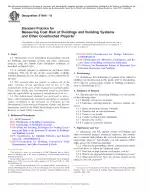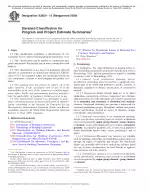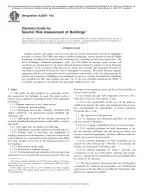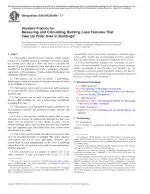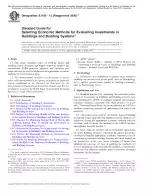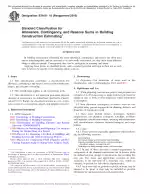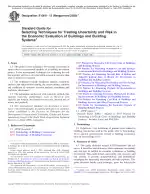ASTM E1946-18 PDF Download
Standard ENStandard Practice for Measuring Cost Risk of Buildings and Building Systems and Other Constructed Projects
Also Known As:
ASTM E1946-18 is a standard practice that provides guidance on measuring cost risk for buildings, building systems, and other constructed projects. It aims to assist owners, architects, engineers, and contractors in evaluating the cost risk exposures of their construction projects. The standard employs the use of cost risk analysis (CRA) to answer important questions related to project cost estimation and contingency planning.
The standard outlines four key questions that CRA helps answer. These questions include determining the probabilities for the construction contract to be bid above or below the estimated value, understanding the potential range of the total project cost, identifying the appropriate amount of contingency to use, and evaluating which cost elements have the greatest impact on the project's cost risk exposure.
CRA can be applied to different perspectives and needs, including the project's contract cost, construction cost (including change orders), and project cost (construction cost plus owner's cost). The standard refers to these different terms collectively as "project cost."
To implement the practice described in this standard, a Monte Carlo simulation technique as described in Guide E1369 is utilized. A computer program is required for conducting the Monte Carlo simulation, which can be a commercially available software program for cost risk analysis or a program developed by the user.
| Descriptors | building systems, cost risk analysis, Monte Carlo simulation, UNIFORMAT II,Building Economics,Building Standards,Building Structures,Buildings,Computer Simulation |
| ICS Codes | 91.010.20 - Contractual aspects |
| Language(s) | English |
| File Size | 348.2 KB |

